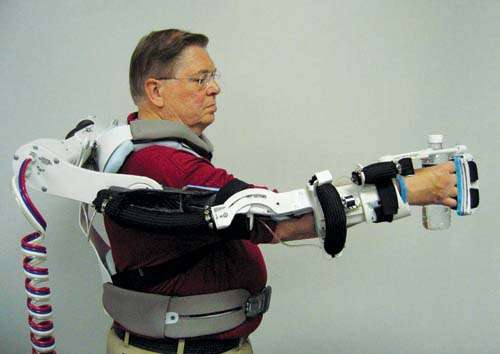Artifact: Natural-Born Cyborgs

The cyborg of tomorrow wears a red polo shirt, drinks bottled water, and has a bit of a middle-aged spread. The contraption strapped to this man is a robotic arm designed to assist stroke survivors; it was developed by Jiping He's team at Arizona State University and Kinetic Muscles Inc. He's former colleague Andrew Schwartz, now at the University of Pittsburgh, made headlines last year with an even more astonishing technology: robot arms run by monkeys with electrodes in their brains, who control the machines' movements with mere thoughts.
Suddenly, the boundary between body and machine looks blurry.
Maybe it was blurry all along. In his 2003 book Natural-Born Cyborgs, the cognitive scientist Andy Clark argues that "what is special about human brains…is precisely their ability to enter into deep and complex relationships with nonbiological constructs, props, and aids." We're not merely becoming cyborgs, he says: We've been cyborgs for centuries, our bodies augmented by glasses and cars, guns and guitars, Google and the written word. Our sense of our own physical presence extends into these tools, as any driver can attest.
Schwartz and He's research may have revolutionary results, but the world emerging isn't that different from the world we lived in before. In science-fiction scenarios, a cyborg is usually alien and inhuman. In practice, he's more likely to don a polo shirt and take a drink.


Show Comments (1)